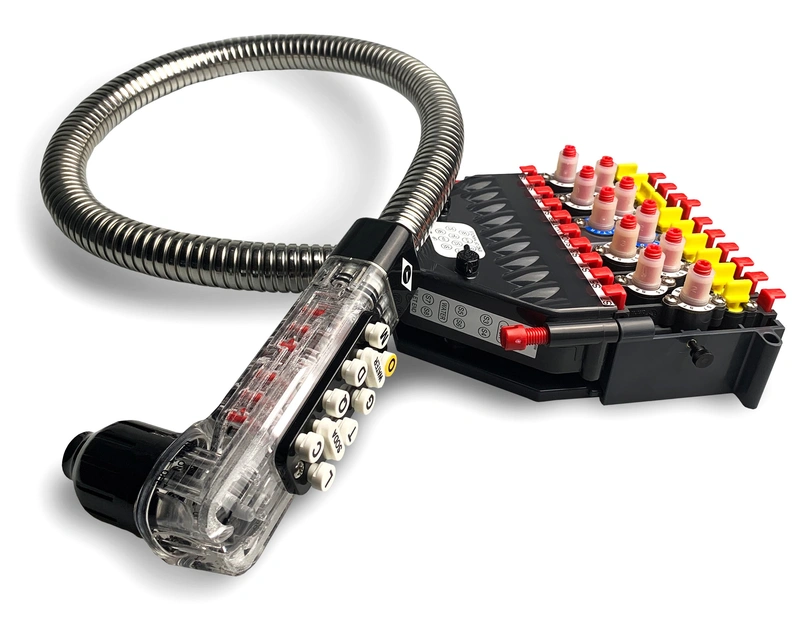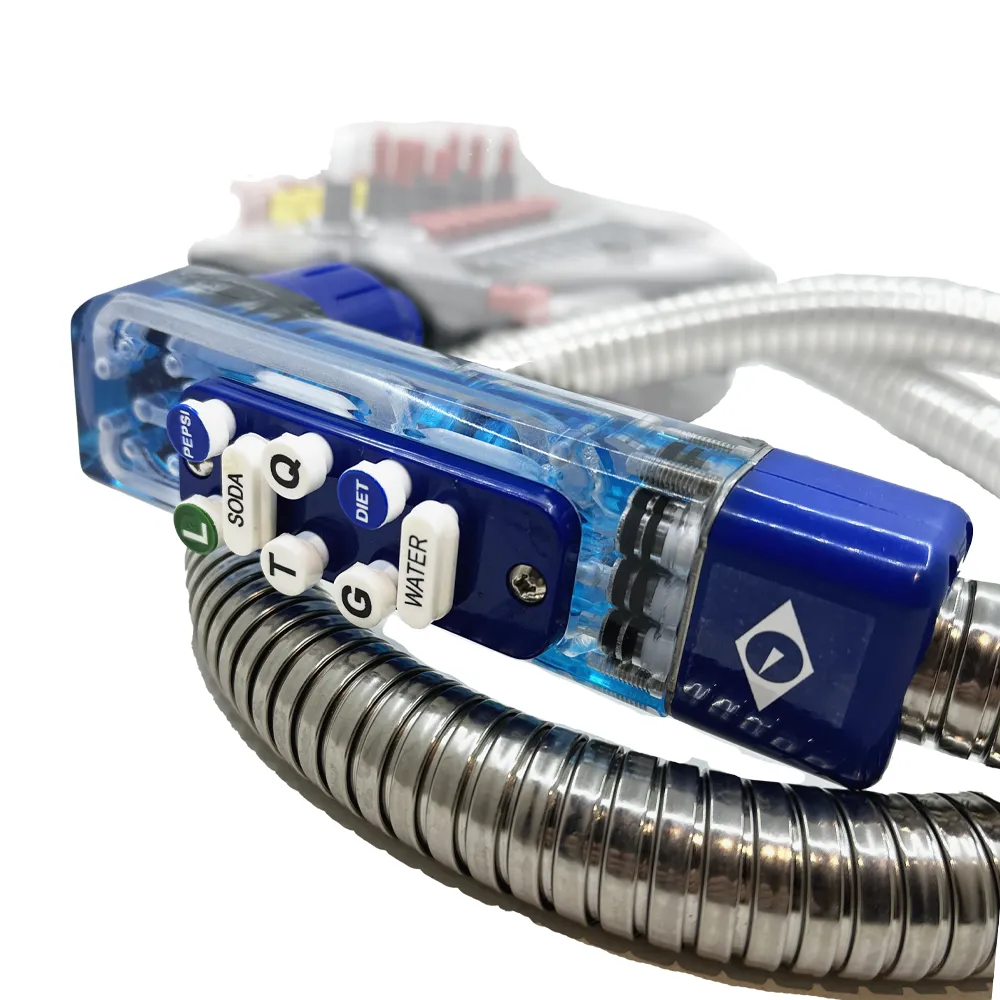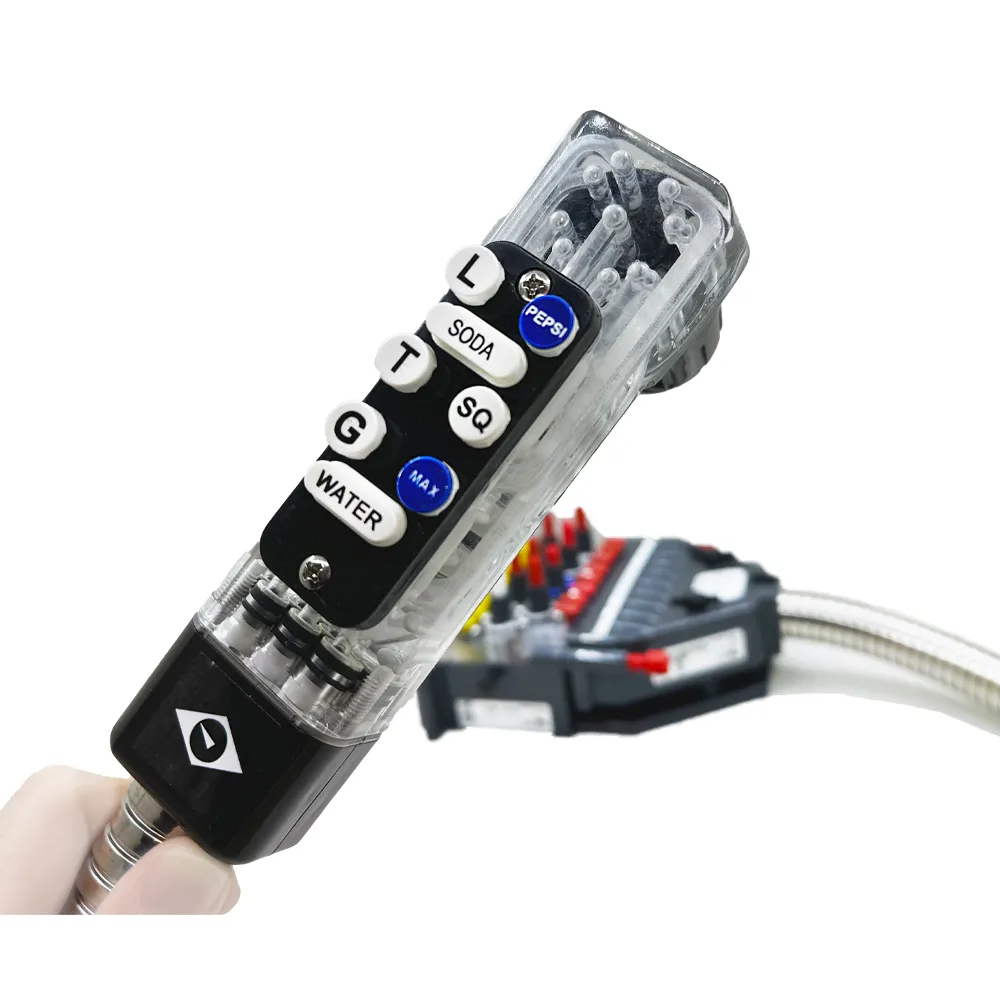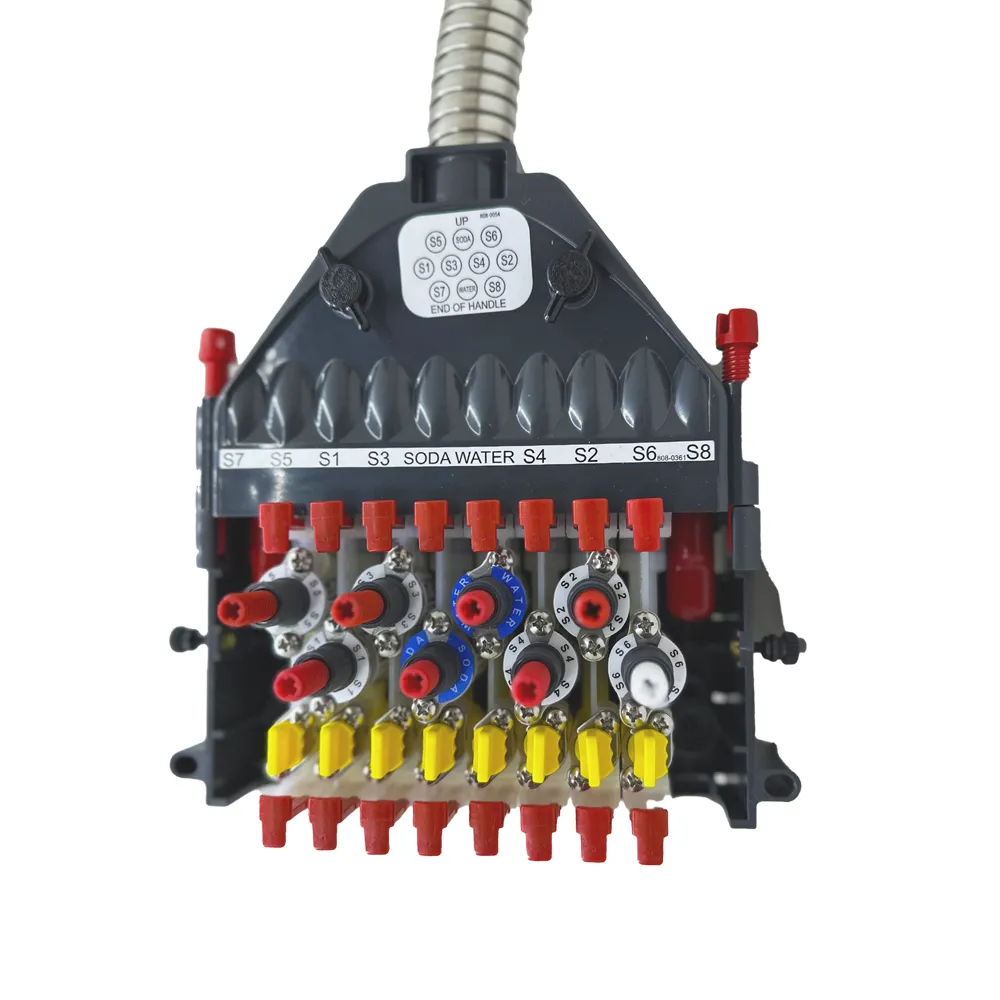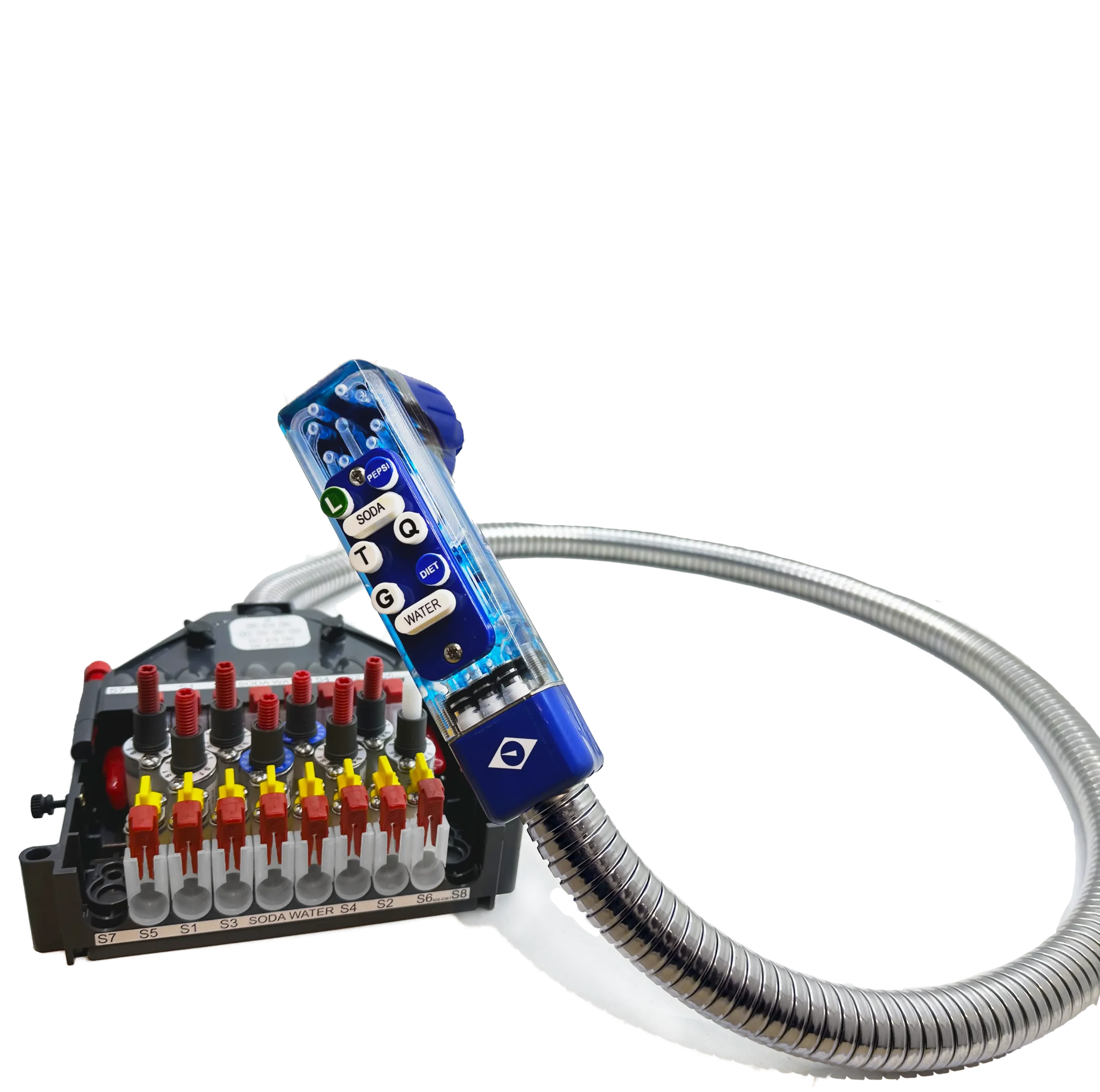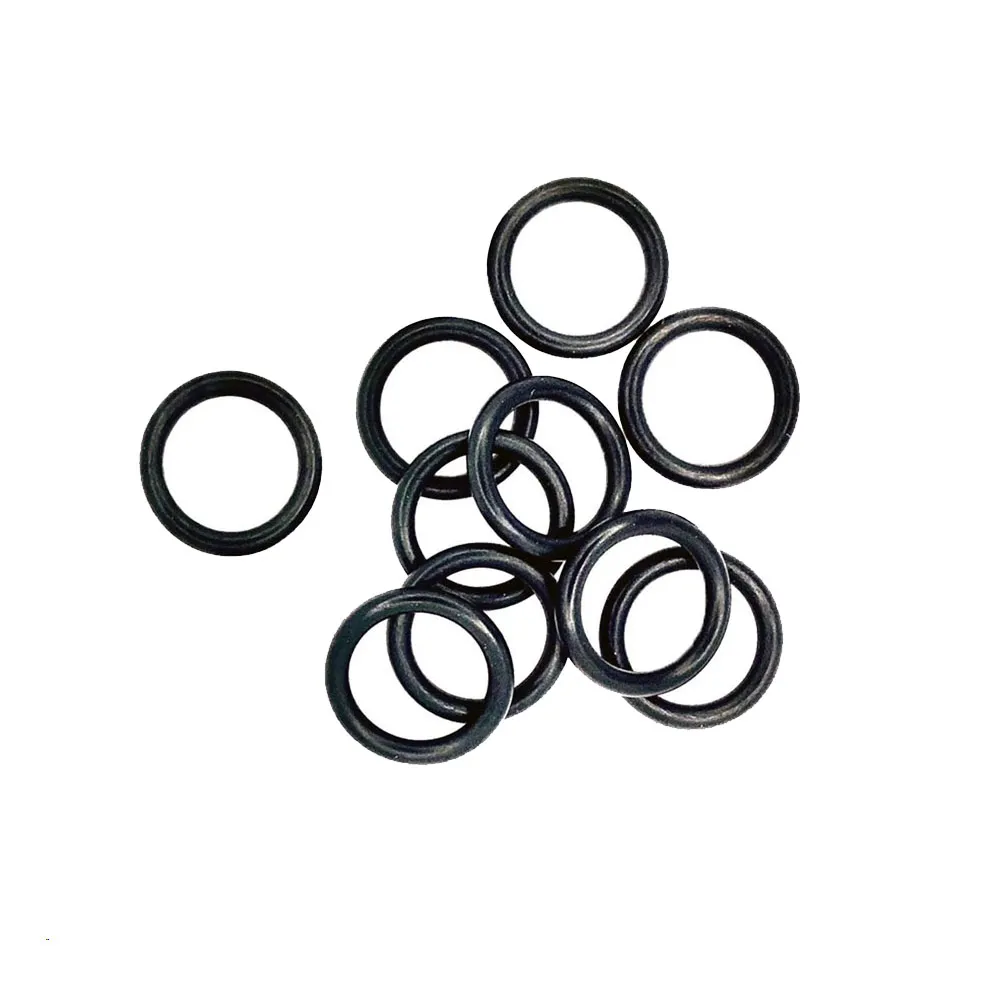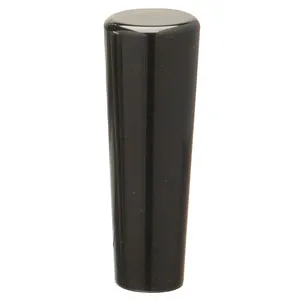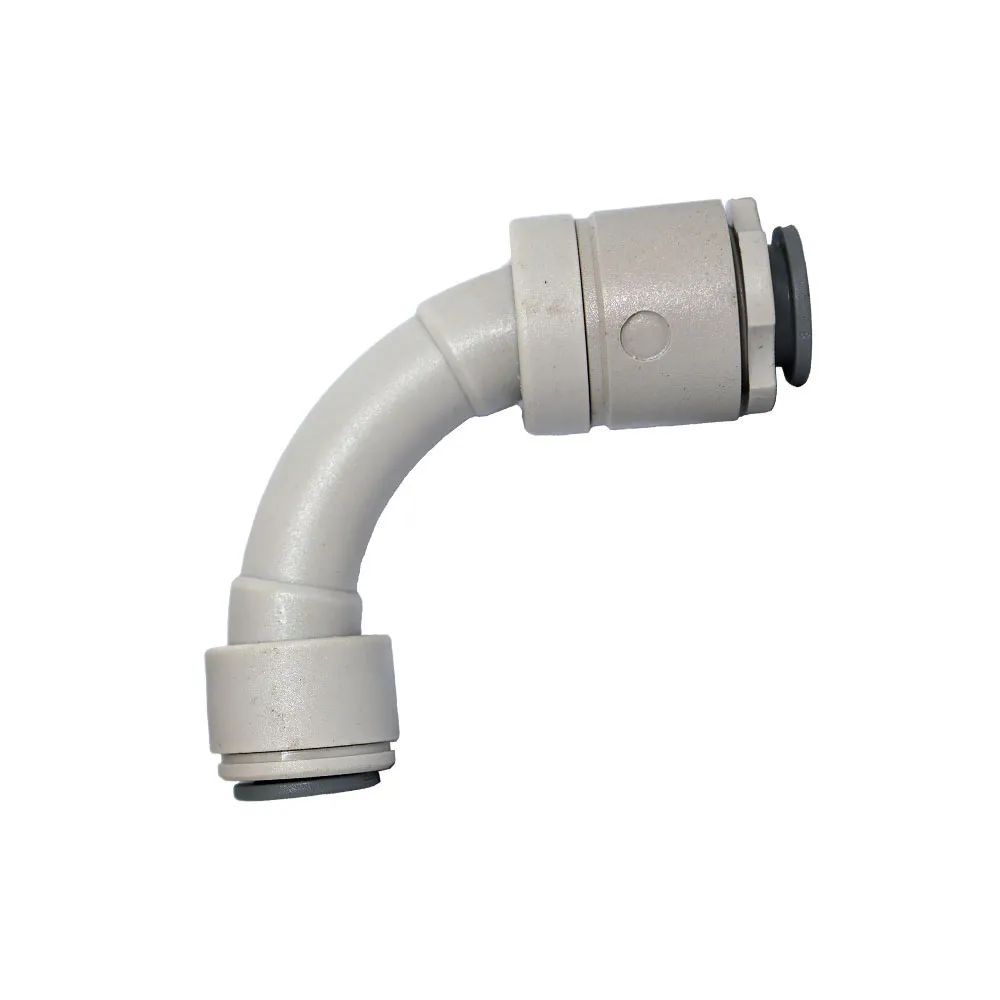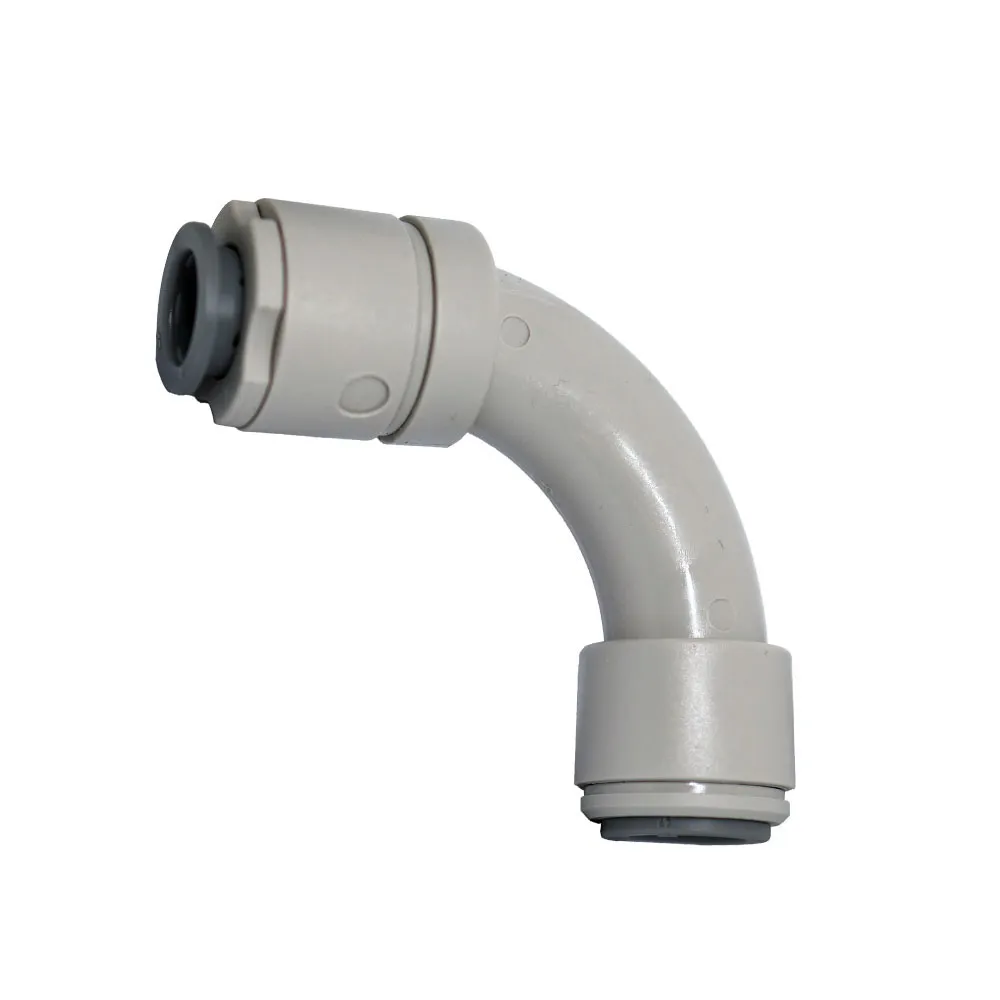Description
Rattler II bar beverage dispenser model 950C
Part Number: 955C-0860-3F192
Length: 48″
Special Features: Captive O-rings
Number of Buttons: 8
Carbonated Products: 6
Non-Carbonated Products: 0
Control Type: Flow Control
Color:Black/Blue
The Rattler II has been crafted with performance, quality, and functionality enhancements that are unmatched. The Rattler II is a compact, innovative bar dispenser engineered by Schroeder America.
The Rattler Bar Beverage Dispenser delivers the performance, durability, and serviceability that have made the Schroeder name synonymous with excellence. The Rattler is optimized for dispense of multiple product types while maintaining flow rates and ratio.
The modernized valve design, available in both mechanical and flow control models, provides true ratio adjustment capability and better ratio control under varying pressures. The manifold maps the position of each line through the dispense point to simplify installation. The valve cover enhances sanitation and protects the entire valve assembly. NSF/ANSI 18 Approved.
The Rattler II Bar Beverage Dispenser offers optimal ratio control in a robust, compact format. The innovative bracket design virtually eliminates the possibility of catastrophic valve failure at the flow controls or shut-offs.
All Rattler whip assemblies are backwards compatible with those of other manufacturers* to save time and effort during equipment replacement and to reduce spare part inventory. Rattler flow control modules have identical footprints to those of the competition* to ease installation in tight spaces and simplify equipment upgrades. The Rattler II Bar Beverage Dispenser provides performance, durability, and serviceability in a compact but robust format. The new captive O-ring design eliminates nozzle leaks from O-ring movement and allows for faster and easier access when servicing the handle. The Rattler II is optimized for dispensing multiple product types, including standard and high yield syrups, while maintaining flow rates and ratio. The compact footprint is 27% smaller* than that of its ICON predecessor.
All Rattler II whip assemblies are backwards compatible with those of other manufacturers to save time and effort during equipment replacement and to reduce spare part inventory. Rattler II flow control modules have identical footprints to those of the competition to ease installation in tight spaces and simplify equipment upgrades.
*Based on size of 10 button, flow control models

